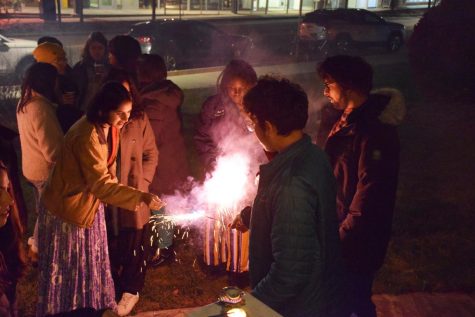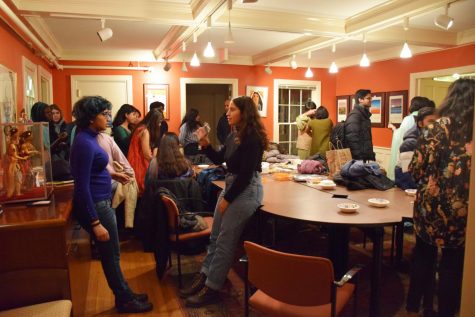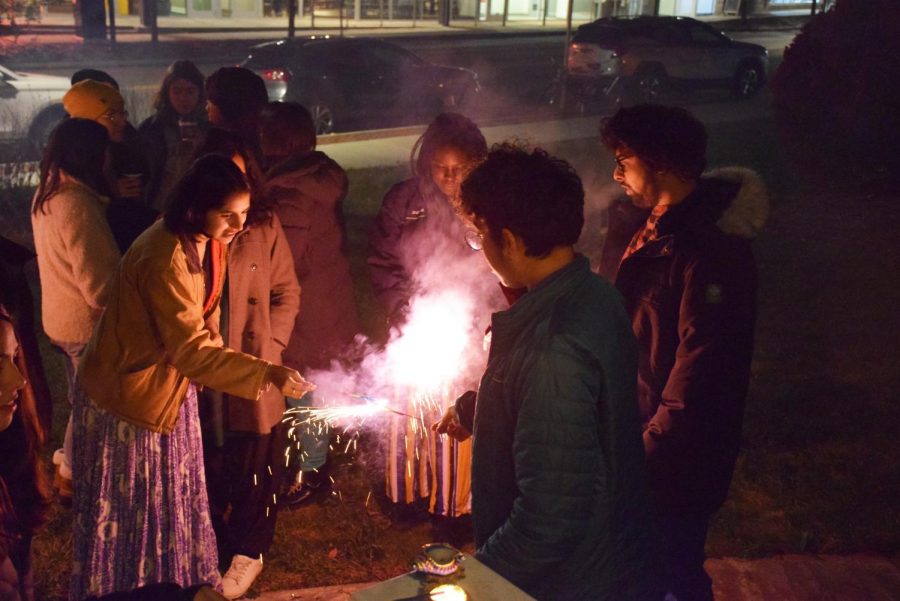Diwali: A Photo Essay

Students light sparklers as part of Diwali festivities.

College third-years Bhairavi Mehra and Reet Goraya enjoying some food and drink.

Students in Shansi House with the leftovers of the Diwali meal.
Living thousands of kilometers away from family, the food you’re familiar with, and the language you’re used to– everything can be just slightly overwhelming. The part that is most difficult though, is missing all the traditional holidays that you’ve experienced for years and have always taken for granted. So when Diwali came to Oberlin last Friday, South Asians dressed in their salwars and kurtas and gathered in Shansi House.
In Hindu mythology, Diwali marks the day that Lord Rama returned to his kingdom of Ayodhya after 14 years in exile, culminating in a war against the 10-headed Ravana. Today, we celebrate the occasion with fireworks, food, and family festivities, sparing no expense in making each year’s celebration bigger than the last. The whole family visits every relative in town, distributing sweets, joining in prayer, or even just sitting down for a nice cup of tea. Many of my happiest memories are of Diwali celebrations, and this year was no exception.
As trays laden with Indian sweets and savory dishes made their way to the tables, a tangible wave of joy swelled in the room. People exchanged stories of home, both in Asia and the U.S., over warm samosas and gulab jamuns. As Bollywood music hummed in the background, students and faculty turned a corner of Main Street into a veritable Little South Asia, complete with a mix of Hindi-Bengali-English, sparklers, and festivities. Just for that night, as with any Diwali night, where we were didn’t matter – that we were together was good enough.
Diwali isn’t special just because it’s a holiday in the Asian subcontinent. It’s special because every year, we are given the opportunity to make new friends, and to find new families. So when we come together, we don’t just celebrate Diwali; we celebrate family.











